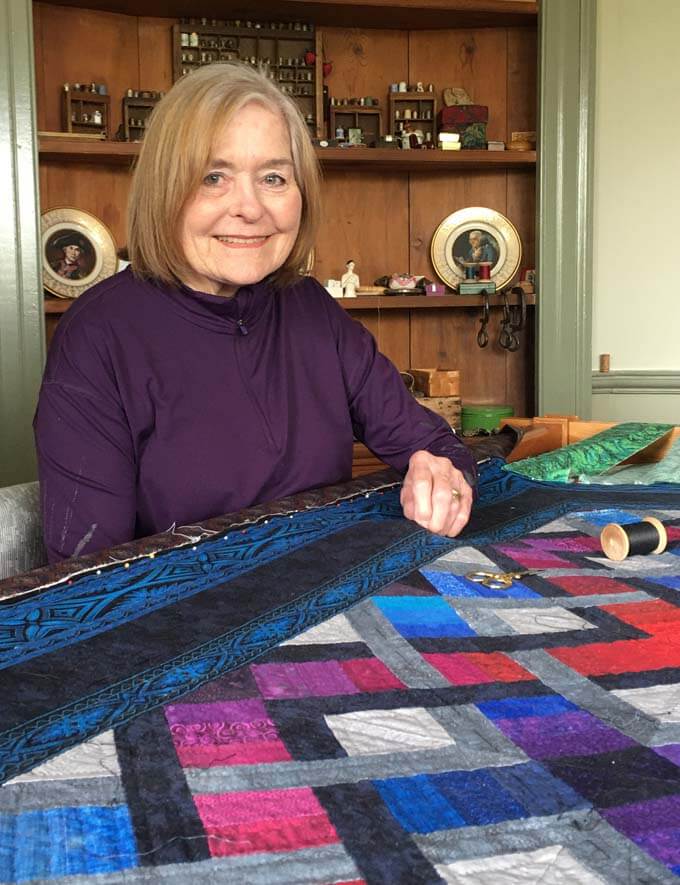
What kind of needle do you recommend for both hand piecing and hand quilting?
First let me say there are a wide variety of needles, sizes and styles available and there are no rules as to what to use. Generally, most quilters prefer “betweens”, but some use applique needles. It depends on how you hold your needle , your method of sewing and whether you do or do not use a thimble. I can tell you the kind I use and why, but you may have different preferences depending on how you sew.

I use a between size 11 needle for both piecing and quilting and have been doing so for all of my quilting life. Many people find the size 11s are too small for them and prefer to use a size 10. Betweens are sturdier and shorter than applique needles which are longer and finer. I put a lot of pressure on the needle when I sew and if the needle is too long or fine, I break it within the first few minutes of sewing. The sturdiness of the betweens eliminates this problem. Also I find that the smaller the needle, the smaller my stitches.
There are also differences in the eyes of needles Some brands have larger eyes and/or put a thin gold coating on the eye. The idea being that both of these practices make it easier to see the eye for threading. For both piecing and quilting, I stack several stitches on my needle at time before pulling it through. As such, I find that when the eye is slightly larger than the shaft it is difficult to pull the needle through and even if the eye is not larger, but has a gold-plated eye, that little extra metal can affect the size of the eye and puts a drag on the needle. I have resorted to keeping a pair of small nosed pliers handy to pull the needle through each time.
Recently I have discovered a new needle. It is the John James Signature collection needles. The finish on it makes it very easy to go through the fabric, the eye appears to be the same size as the shaft and it is sturdy enough to handle the abuse I give a needle without bending or breaking, I like the packaging the needles come in—a small tube with 25 needles per tube. That may make them seem more expensive, but most needles come in packages of 10. I have been using the Signature between 11 for both piecing and quilting and have be able to put the pliers away. For me it is definitely the Cadillac of any needles I have tried.









































